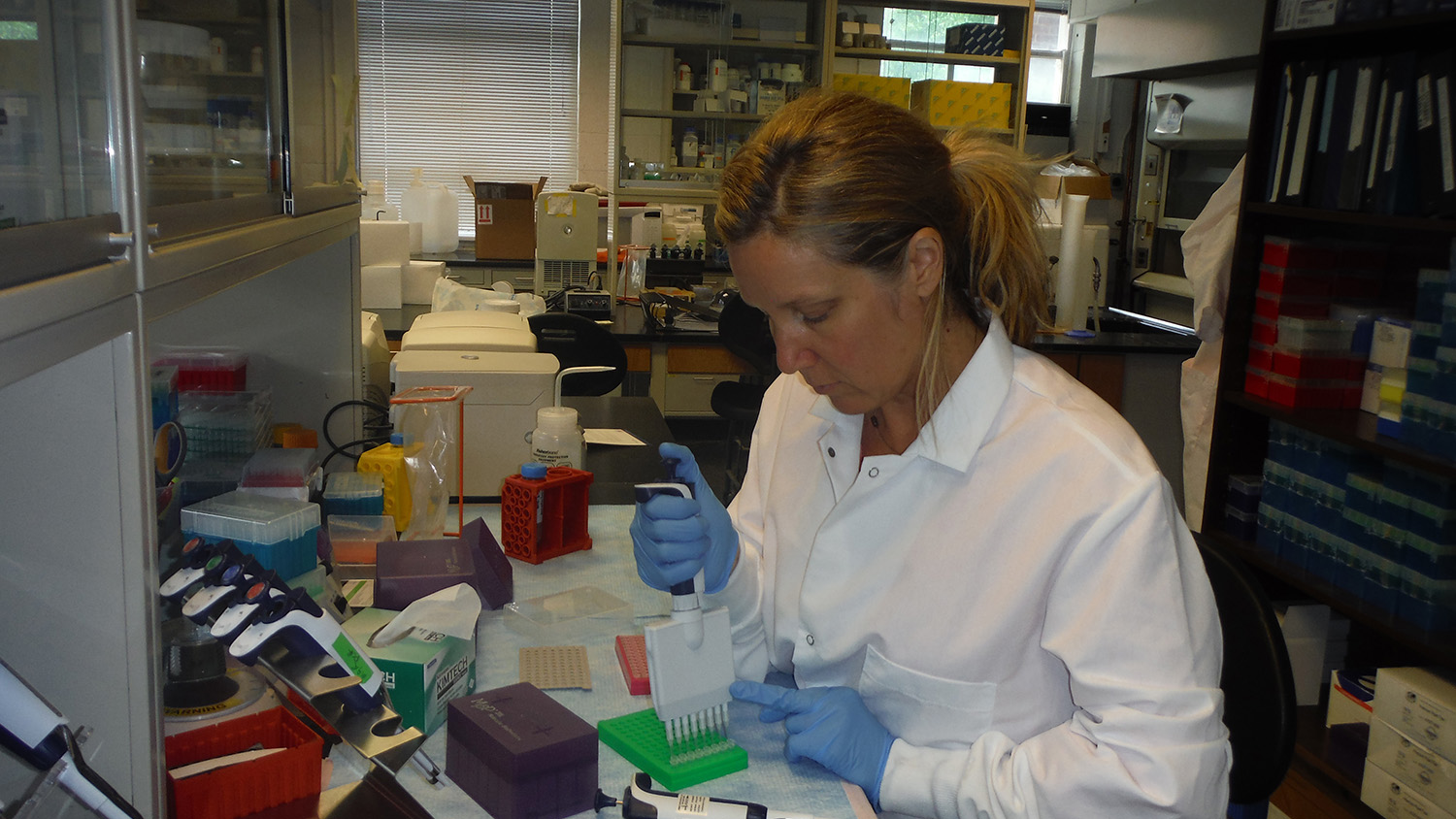In the Wild and the Lab, Female Mosquitoes Get Choosy Quickly to Offset Invasions

For Immediate Release
Certain female mosquitoes quickly evolve more selective mating behavior when faced with existential threats from other invasive mosquito species, with concurrent changes to certain genetic regions, according to new research from North Carolina State University. The findings shed light on the genetics behind insect mating behavior and could have implications for controlling mosquito pests that plague humans.
At issue is the displacement of Aedes aegypti (yellow fever) mosquitos by a cousin species, Aedes albopictus (Asian tiger), which occurred in the southeastern United States in the 1980s. In this “battle of the Aedes,” the invading A. albopictus decimated A. aegypti populations throughout the Southeast, leaving smaller A. aegypti populations in Key West, Florida, Arizona and a few other southern locales. A. aegypti mosquitoes carry and spread many diseases that harm humans, including Zika, dengue fever and chikungunya.
Part of the takeover was attributed to how the larvae of each species grew; A. albopictus mosquitoes seemed to be able to outcompete the native mosquitoes. But another factor also played a huge role in the battle: When A. aegypti females mated with A. albopictus males – a genetic no-no – those females became sterile for life, a process called “satyrization.” A. albopictus females didn’t face the same fate; no offspring were produced when they mated with A. aegypti males, but they were later able to be fertile when mating with males of their own species.
Martha Burford Reiskind, research assistant professor in the Department of Applied Ecology at NC State and corresponding author of a paper describing the research, and colleagues wanted to understand more about how A. aegypti females respond to this type of threat and what happens in their genetic blueprint as their responses change.
The researchers found that A. aegypti females quickly – in just six generations – became more picky when selecting mates, eschewing A. albopictus males for males of their own species. This response occurred when A. aegypti females were exposed to cousin males in the lab and in the wild. Geographic location didn’t seem to make a difference: The female mosquitoes in both Florida and Arizona exhibited similar genetic changes.
“We wanted to know what genes were involved in the evolution of this choosiness in female A. aegypti mosquitoes,” Burford Reiskind said. “We can now look at certain gene regions and feel confident that they are involved in mating behavior.”
Choosiness had its costs, though. Burford Reiskind said choosy female A. aegypti mosquitoes mated later in their brief lifespans – most live for two or three weeks – and were generally smaller.
“Invasive species are often seen as better competitors for scant resources, but that doesn’t seem to be the case for these mosquitoes,” Burford Reiskind said. “This study suggests other mechanisms are at play.”
Burford Reiskind hopes to continue learning more about the genes involved in mating behaviors by conducting a larger-scale study, perhaps in places where A. aegypti and A. albopictus mosquitoes live in relatively equal densities.
The research appears in Molecular Ecology. Michael Reiskind, associate professor of entomology at NC State, and Paul Labadie, an NC State agricultural research technician, co-authored the paper, as did Irka Bargielowski and Phil Lounibos from the University of Florida.
The research was supported by the National Institutes of Health Grant R21 AI095780 and by a Dean’s Enrichment Grant from NC State’s College of Agriculture and Life Sciences.
– kulikowski –
Note to editors: An abstract of the paper follows.
“Rapid evolution and the genomic consequences of selection against interspecific mating”
Authors: Martha Burford Reiskind, Paul Labadie and Michael Reiskind, North Carolina State University; Irka Bargielowski and Phil Lounibos, University of Florida
Published: Online Aug. 1, 2018 in Molecular Ecology
DOI: 10.1111/mec.14821
Abstract: While few species introduced into a new environment become invasive, those that do provide critical information on ecological mechanisms that determine invasions success and the evolutionary responses that follow invasion. Aedes albopictus (the Asian tiger mosquito) was introduced into the naturalized range of Aedes aegypti (the yellow fever mosquito) in the USA in the mid 1980s, resulting in the displacement of A. aegypti in much of the southeastern USA. The rapid displacement was likely due to the superior competitive ability of A. albopictus as larvae and asymmetric mating interference competition, in which male A. albopictus mate with and sterilize A. aegypti females, a process called “satyrization.” The goal of this study was to examine the genomic responses of a resident species to an invasive species in which the mechanism of character displacement is understood. We used double digest restriction enzyme DNA sequencing (ddRADseq) to analyze outlier loci between selected and control lines of laboratory-reared A. aegypti females from two populations (Tucson, AZ and Key West, Florida, USA), and individual females classified as either “resisted” or “mated with” A. albopictus males via mating trials of wild-derived females from four populations in Florida. We found significant outlier loci in comparing selected and control lines and between mated and non-mated A. aegypti females in the laboratory and wild-derived populations, respectively. We found overlap in specific outlier loci between different source populations that support consistent genomic signatures of selection within A. aegypti. Our results point to regions of the A. aegypti genome and potential candidate genes that may be involved in mating behavior, and specifically in avoiding interspecific mating choices.
- Categories:


